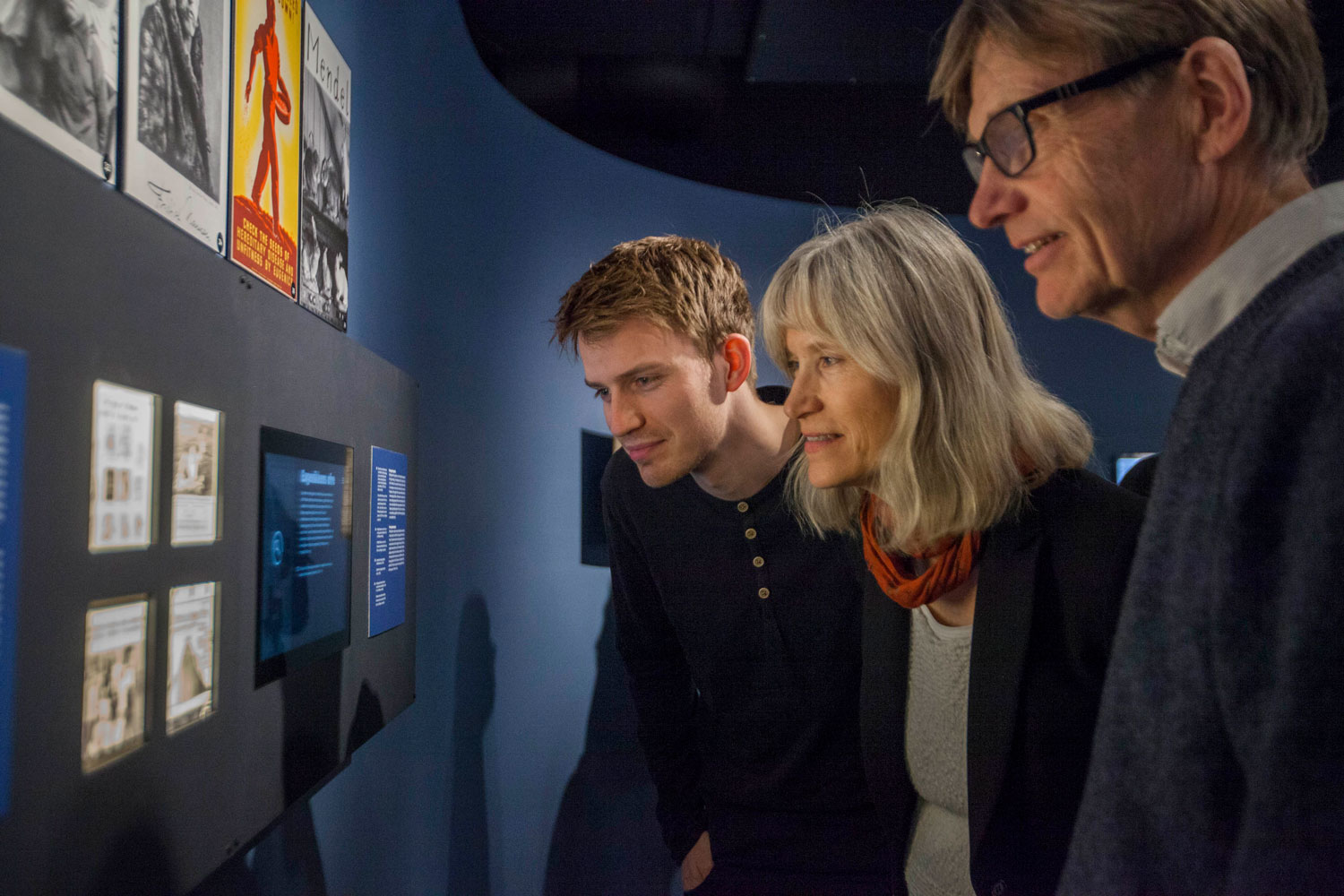
VIEWPOINT - The British Society for the History of Science has published an excellent review of the exhibition FOLK, written by LSE’s Dominic Berry. Read it here, or download pdf.
Review: FOLK Exhibition, Oslo
LSE’s Dominic Berry tours a new gallery at The Norwegian Museum of Science and Technology.
I cannot cover everything significant about this important new gallery curated by Ageliki Lefkaditou and Jon Kyllingstad, and opened in 2018 at The Norwegian Museum of Science and Technology, Oslo. The exhibition directly addresses the long history and present status of research on human biological diversity in the hands of phrenologists, anthropologists, eugenists, and geneticists.
Understanding history’s ongoing legacies in contemporary science and society, the exhibition creates an opportunity for visitors to challenge their assumptions about what race might mean, hear from the subjects of racial science themselves, learn the methods that have made up different sciences of human biological diversity, and connect these directly with the politics of their context in the past and present.
The full title of the exhibition is ‘FOLK – From Racial Types to DNA Sequences’. Around the outer edge are various detailed panels addressing different periods, sciences, and significances, while at the centre there is an innovative circular perspex cabinet (photographed) that visitors can enter into, its shelves containing touchstone objects that link up the different questions and themes of the overall exhibition. The effect is that the visitor very naturally begins to ‘look through’ the object in their foreground, to see it in conjunction with the materials on the walls behind.
The middle of the perspex ring also contains a table full of books on the history of race science, and chairs for visitors to sit and talk through their experience. Visitor reflection on and discussion of the FOLK thesis is thus actively encouraged. And the FOLK thesis? That attention to the history of race science demonstrates over and over again that biological conceptions of race are untenable, based on flawed starting assumptions with disastrous and deleterious social and political ramifications. Whatever the biological differences between humans may be, a concept as ill-formed as race can play no part in its understanding.
To the left of the gallery’s entrance are illuminated magic lantern slides showing the faces of people photographed by anthropologists in the 19th century, people who were taken to exemplify distinct ‘race types’. As visitors enter the gallery, they will find in front of them a smaller ring-shaped wall containing examples of human face and skull-shape models once regularly produced by anthropologists for the purposes of demonstrating racial typologies.
One of the first exhibits visitors will come to explains the routine measurement of soldiers, who provided a ready supply of body shapes and sizes taken to represent the nation. Photographs of one particular cohort were taken as part of a national measuring project in 1920-21, where all young Norwegian men who did military service underwent physical-anthropological measurements of body type, head shape, eye colour, and hair colour. Indeed, this was an international phenomenon, recruits being used for these purposes in many countries largely because they could not refuse participation. Such photos and measurements were then used to divide the national population into racial types, coming to be published and circulated internationally.
Arguably the gallery’s most significant exhibit is the one intended to give a voice to those who have been used as subjects in race science, where putative biological distinctions often reinforced their marginalisation. FOLK was completed in collaboration not only with university and museum researchers, but also with some of the Sami people, a group that has been central to physical-anthropological study of racial types in Europe.
Working with the Árran Lule Sami Centre, the curators created an exhibit that directly addresses the power imbalances involved in biologically typologising the Sami — and making them into museum displays, for that matter — and the repercussions that typological thinking has had on their historical marginalization and exoticisation. Working with some of the Sami people, the curators have brought forth the biographies of some of those photographed for the purposes of anthropological measurement, who might otherwise have remained nameless. A video exhibit playing interviews with Sami people remembering the visits of anthropologists to their communities, and their measuring practices, plays alongside. Here, in particular, visitors are confronted with the implications of assigning specific values, features, and essences to people according to biological groups. FOLK thus directly examines how scientists may carry such views in their asymmetrical encounters with their subjects of study and, in turn, how scientific research has typically reinforced such views.
There is more in this exhibition than I can hope to cover in a single review, but elsewhere visitors are shown the role of race science in eugenics, the commercialization of a genetics of race, and the making and remaking of national identities according to biology. Much of the exhibit also addresses genetic and anthropological research in the present.
The FOLK gallery demonstrates HPS museum practices at their very best, refusing to look away from uncomfortable subjects, and improving our understanding of what science is and how it works in an area that could not require it more urgently. In its displays and in its curators’ practices of co-production, the gallery sets a new benchmark for museums dealing with history of the human sciences.





